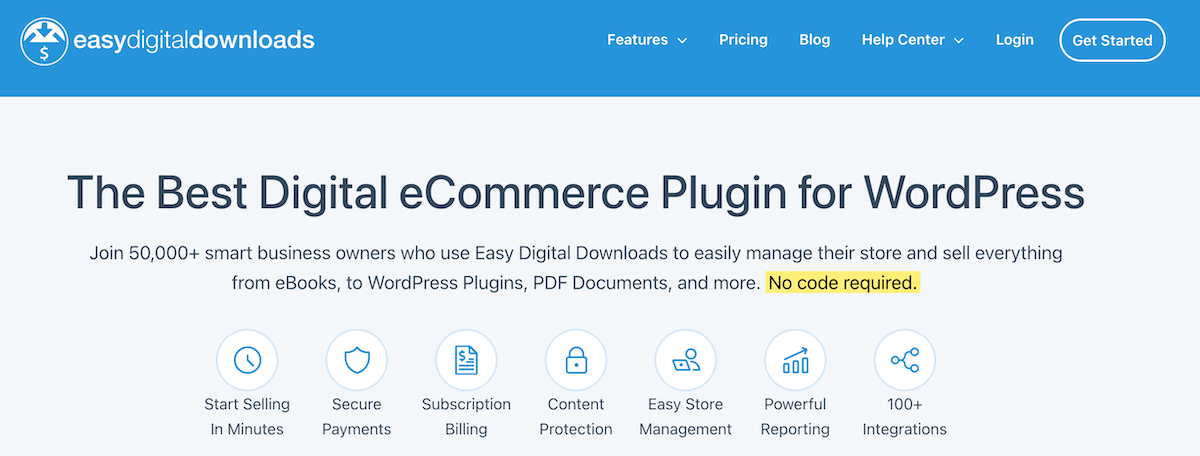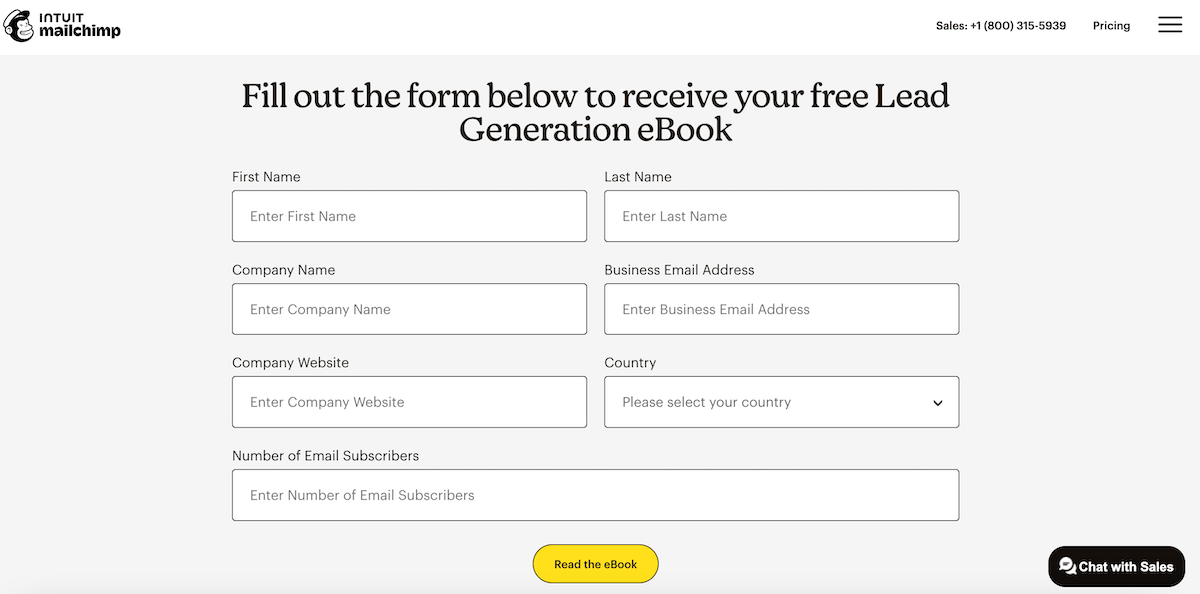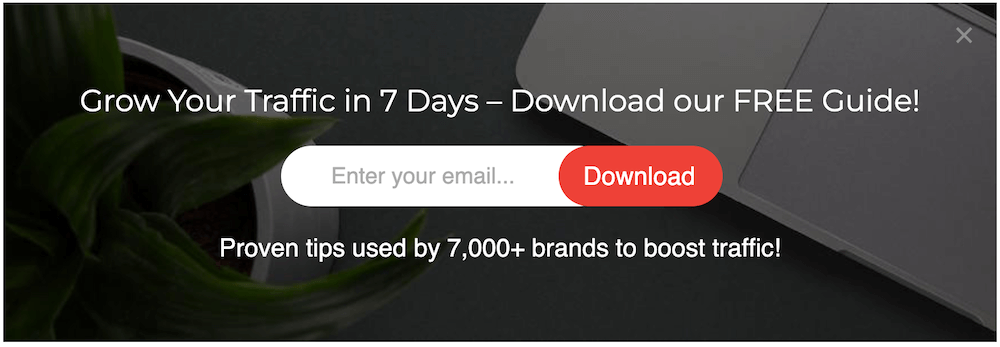As a website owner, you probably already understand the importance of lead magnets, either to generate more leads, to help you gather valuable user information, or to play an integral role in your sales funnel. But do you know the best way to implement lead magnets or how to get them to convert?
There are a variety of methods that can be used to get more sign-ups from lead magnets, such as automatically delivering them, tracking conversions, and/or optimizing sign-up forms based on analytics data. But it’s also important to understand the best strategies and practices so that you can get the most out of your lead magnets.
In this article, we’ll explain how to configure high-converting lead magnets on your WordPress site. We’ll also tell you how to optimize conversions from your lead magnet through strategic widget placement and design.
Powerful Lead Magnet Strategies for WordPress Sites
A lead magnet is a resource intended to convert your website visitors into subscribers (and eventually paying customers). Some of the more common lead magnets include ebooks, white books, case studies, free trials, and limited-time offers.

Video and text-based lead magnets have the best conversion rates, but there are a number of strategies that can be used to get your lead magnets to convert. For example, you can use popups, top or bottom bars (or sidebars), carefully placed CTAs, and triggerable conversion widgets, all of which can help to improve your conversions.
One such use case would be to transform existing WordPress content into a downloadable guide, which you can offer to site readers in exchange for their email addresses through a popup. A useful plugin in this scenario is FooConvert, which has options for promoting lead magnets through targeted popups and flyouts.
The Best WordPress Conversion Plugin
FooConvert is an easy-to-use WordPress conversions plugin, draw attention, increase sales and engagement.
How to Create High-Converting Lead Magnets in WordPress
There are several moving parts to a lead capture system, all of which need to be in place for your lead generation to be successful.
- First, you need a downloadable asset: for example, you could use existing content on your site to create a guide or manual, which users could then download. Other examples of lead magnets could include a free trial, downloadable infographics or templates, case studies, checklists, quizzes, or discounts.
- Next, you need to strategically place widgets such as top bars for announcements, exit-intent popups for downloads, or flyouts for targeted offers. You can also select the most relevant pages or posts on which to display your widgets.
- Then, you need to connect your email marketing platform or CRM to manage your leads within your funnel.
The following sections work as a step-by-step guide to ideating, configuring, and optimizing a lead magnet on your WordPress site.
Configure Your Lead Magnet Solution
The solution you use will depend on what your lead magnet is. For downloadable items, you can use plugins like Easy Digital Downloads. The content itself should be hosted on a secure cloud storage service. Once the reader provides their email, the plugin will then generate a unique, time-limited download link, which the reader can use to recoup their download.

This method would work for any resource that you could download. Some ideas for lead magnets such as this could include free courses, ebooks, or content samples.
Ecommerce sites can look into alternate lead magnets like discounts or limited-time offers. These types of lead magnets can be configured in WooCommerce by auto-applying coupons, for example, or by providing discount codes for specific users. In this way you can target specific user groups, such as new or returning customers.
Once you have established what you will offer customers as a lead magnet, you can set up a form solution to capture email addresses. This can be done effectively with FooConvert, either using the signup form template or by integrating an option like Gravity Forms into your widget.
Here’s an example from Mailchimp:

Your form can be as simple or detailed as you need, depending on the data you wish to capture; however, having too many form fields can sometimes be a barrier for users. This can negatively impact your conversions. Research shows that having between 3-5 fields can give you a higher conversion rate.
Conversion Widget Design and Placement Best Practices
The next step is to configure a popup or widget to draw attention to your lead magnet (you can think of this as the ‘vehicle’ for your lead magnet). Designing high-converting widgets can be difficult, but a solution like FooConvert does the job for you.
FooConvert has a range of pre-designed templates, one of which is a Lead Magnet widget, a targeted popup with a form to capture details from potential leads or customers. You can use the popup, bar, or flyout widget, all of which can be configured for different triggers (like exit intent or page scroll) and can be placed in strategic locations on your site. Here’s an example of FooConvert’s lead geneeration sign-up bar:

For example, it can be beneficial to position content upgrade widgets directly after related blog posts or to place download offers in the sidebar for extended visibility. FooConvert makes all of this possible – and you can even easily make changes, tweak your conversion widgets, and track their performance with real-time analytics.
Connect Your Email Marketing Platform
Email marketing or CRM integration functionality is an essential part of an effective lead magnet strategy. You want to be able to collect leads effectively but easily. With FooConvert, you can create eye-catching forms that can target audiences at the right moment for optimal conversion.
This allows you to collect user data through the FooConvert popup, flyout, or bar widgets. The signup bar will collect and store user emails in a Leads table, detailing where each lead came from, and which you can then import to your chosen mailing service. Or you can use a Mailchimp or Gravity Forms integration to create a sign-up form to build your subscriber list on your email marketing platform.

This is a game changer for your email-gathering efforts, as leads can then be segmented into different audiences, allowing you to target set groups for specific purposes. For example, you can offer new users an introductory offer or target existing customers by offering them a loyalty reward.
Email marketing integration is an essential step for building a high-performing sales funnel from your lead magnets, and it can be easily and effectively achieved with the right tools, like FooConvert.
Measure and Optimize Your Lead Magnet Performance
As with any conversion-focused element, analyzing any lead magnet’s data is crucial for gaining insights into how it is performing. In this way, you can iterate and test variations and thus maximize conversions.
FooConvert comes with real-time analytics for each widget that helps track performance. This data includes metrics like clicks, views, events and unique visitors. Based on this, FooConvert’s analytics is also able to show the engagement and conversion rates for the widget. It also indicates the number of closes, which is then used to determine whether your users have a positive or negative sentiment towards the widget.
This data allows you to carry out A/B testing for your different pop-ups, flyouts, and CTAs, giving you valuable insights into what works best for the audience. The analytics page will also show when any changes are made to a widget and indicate what the change was, so you can assess whether the change was successful.
Other tools like Hotjar provide you with heatmaps and scroll-depth tracking tools to analyze user behavior and help you to better refine widget placement. You can also test different lead magnet types (ebooks vs. free trials, for example) on specific high-traffic pages, which can further help you optimize performance.

A/B test different lead magnet types on your highest-traffic pages to determine what works best for specific audience segments. For example, compare how technical audiences respond to detailed guides versus how new visitors engage with quick-start templates. This targeted approach helps identify which formats drive the highest quality leads for each segment of your audience.
Steve Usher, Developer at FooPlugins.
Regularly reviewing and tweaking lead magnet strategies based on data ensures long-term effectiveness. As audiences or interests change, your strategies should change alongside them. Using the data from tools like FooConvert can help you adapt strategies to meet audience needs.
Start Building Your Lead Magnet Today
As we’ve seen, a well-designed lead magnet combined with effective widget placement and strong email marketing integration can significantly boost conversions. Of course, this becomes a lot easier when using the right tools.
A plugin like FooConvert plays an important role in the lead-generation process, and can help to streamline the entire process, from setup to tracking performance. With FooConvert, you can create your lead magnet CTA, gather emails and essential user data, and track the effectiveness of your widget, allowing for maximum conversions with minimal effort.
It is advisable that WordPress site owners continuously test, refine, and optimize their lead magnets for sustained success. Using FooConvert can make this process simpler.
Start implementing lead magnets today with FooConvert to grow your email list and drive more sales!
The Best WordPress Conversion Plugin
FooConvert is an easy-to-use WordPress conversions plugin, draw attention, increase sales and engagement.